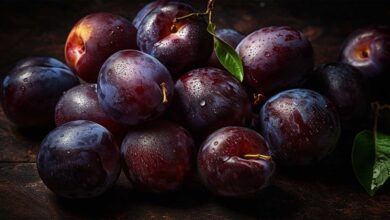Lutein and Zeaxanthin | Eye health supplements

In a world where eye health is increasingly important, especially with prolonged exposure to screens and an aging population, it is essential to know natural ways to preserve our vision. Lutein and zeaxanthin are two pigments that have antioxidant properties and are therefore very beneficial for the health of our eyes. They are now widely available as nutritional supplements and their benefits are fully scientifically proven. Here is an article evaluating this topic.
Briefly
- The carotenoids lutein and zeaxanthin, which are naturally found in dark green or orange fruits and vegetables, play a crucial role in eye health.
- Humans cannot biosynthesise these pigments: intake must therefore come from food or supplements.
- These carotenoids act as high-energy blue light filters and have antioxidant and anti-inflammatory properties.
Buy eye supplement at the best prices
Amazon Affiliate Link. Prices mentioned in this article are indicative and subject to change.
From food to the retina
Of the more than 600 types of carotenoids found in nature, humans consume between 30 and 50 types in their diet. However, only 10 to 15 carotenoids can be consistently detected in our blood. Among them are lutein, zeaxanthin, and their metabolites.
These two dietary carotenoids, found in dark green leafy vegetables and orange and yellow fruits and vegetables, are transported through the blood and distributed in various tissues.
Like all mammals, we cannot manufacture them biologically, and therefore rely entirely on our diet or nutritional supplements for these contributions.
Lutein and zeaxanthin are distributed to various tissues, especially the retina. In the human retina, the concentration of these carotenoids reaches a level between 0.1 and 1 mmol in the central fovea.(1)It is about 1000 times higher than other tissues.
Therefore, these two pigments are called macular pigments. In the retina, zeaxanthin predominates in the central zone, while lutein predominates in the peripheral zone.
Macular pigments: anti-aging for our vision
Previous studies have shown that macular pigment (PM) concentrations are associated with several indicators of visual performance, such as vision, glare, or critical fusion frequency (CFR).(2).
In addition, macular pigments can help protect us from age-related macular degeneration and cataracts.
In fact, these macular pigments have blue light filtering properties, and also have strong local antioxidant and anti-inflammatory activities.
Therefore, these macular pigments absorb and mitigate photodamage to the human retina.
In the inner retina, it acts as a filter for the high energies and corresponding short wavelengths of blue light. These macular pigments therefore protect the outer retina from photochemical lesions caused by these high-energy wavelengths.
This filtering of high-energy blue light is a major function of these macular pigments.
In the outer retina, these macular pigments act as antioxidants. The outer segments of photoreceptors contain chromophores that act as photosensitizers and are very sensitive to oxidative damage.
It has been shown that lutein and zeaxanthin are able to neutralize free radicals (reactive oxygen species) generated by chromophore irradiation, effectively protecting the retina from the harmful effects of lipid peroxidation.(3).
Clinical interest
At a clinical level, it has been proven that consuming lutein and zeaxanthin can have a beneficial effect on the acuity of our vision and protective properties for the health of our eyes.(4).
The eye is a major sensory organ and many studies have identified lutein and zeaxanthin as important components of the health of our eyes. The role of these pigments in human health, especially eye health, has been established based on epidemiological, clinical and interventional studies.(5).
These pigments are also associated with a reduced risk of age-related macular degeneration (AMD). They can also improve optical performance by reducing chromatic aberration and improving our sensitivity to contrast(6).
Furthermore, research in the past decade has mainly focused on developing carotenoid-rich foods to increase their intake, especially for older people.
Macular degeneration
Age-related macular degeneration (AMD) is the leading cause of blindness in developed countries. It accounts for more than 50% of all cases of blindness in the United States.(7).
In the UK, nearly 200,000 people aged 75 or over have visual impairment due to AMD.(8). It is a chronic progressive disease that affects the central retina.
Due to the sharp increase in the number of elderly people, this disease has placed a heavy burden on the health care system and has had a profound impact on the quality of life and independence of older people.
It is estimated that by 2020, the number of patients with age-related macular degeneration will increase by more than 50% to nearly three million in the United States alone.(9).
Although the pathogenesis of AMD is still poorly understood, oxidative stress is implicated as a major contributing factor.
Because lutein and zeaxanthin are antioxidants that are selectively absorbed and maintained in the retina, their role in AMD has been extensively studied. Epidemiological studies suggest that adequate consumption of lutein and zeaxanthin may be associated with a reduced risk of age-related macular degeneration (AMD).(10)(11).
Cataracts
Cataracts are clouding of the lens inside the eye, obstructing the passage of light. Age-related cataracts are the leading cause of blindness and visual impairment worldwide.
It is estimated that 20 million people over the age of 40 have poor vision due to cataracts in the United States.(12).
In developing countries, cataracts are the leading cause of blindness in people over 40 years of age due to malnutrition and infectious diseases.
Although new treatment methods have emerged in recent years and can cure most cases of cataracts, high treatment costs and increasing demand for treatment challenge long-term economic prospects.
Thus, identifying modifiable factors available to prevent or delay cataract development is a critical strategy.
Cumulative oxidation of proteins or lipids (lipids) in the lens is involved in the pathogenesis of cataracts, and dietary antioxidants may protect the lens from cataract formation.(13). Antioxidants can therefore prevent or reduce oxidative damage to the lens.(14).
As the only carotenoids present in the lens, lutein and zeaxanthin are able to filter out ultraviolet and blue light, neutralize free radicals, and thus reduce oxidation caused by light damage to the lens, suggesting that they may play a protective role in preventing cataracts.(15).
A longitudinal study has already shown that higher levels of zeaxanthin in plasma reduce the risk of cataracts(16).
(tags for translation)From food to the retina
Lutein and Zeaxanthin | Eye health supplements


